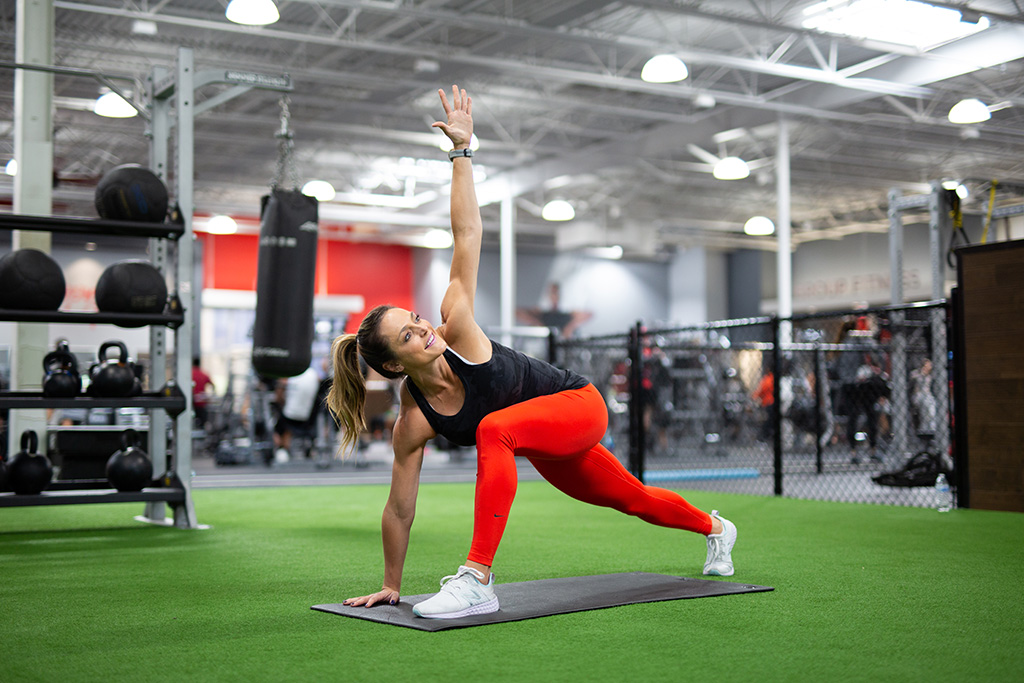How Often Should You Work Out and For How Long
A healthy lifestyle is anchored by exercise and movement. Current guidelines recommend 150 minutes of moderate or 75 minutes of vigorous activity each week. Many gym goers aren’t sure how to break this up to reach their goals. Keep in mind these are the minimum recommendations; we should get at least that much activity of different intensities throughout the week.
Moderate intensity is defined as 65-75% of a person’s estimated maximum heart rate, while vigorous intensity is defined as 75-90% of a person’s estimated maximum heart rate. Moderate-intensity activities include brisk walking, water aerobics, and cycling. All these raise the heart rate and can produce a nice sweat. Vigorous-intensity activities include jogging/running, cycling uphill, and many recreational sports, each causing a higher heart rate and producing more than just a little sweat.
In addition to the 150 minutes (about two and a half hours) of moderate activity, two strength training sessions should also be included in the weekly schedule. Cardiovascular health is important for heart health, while strength training keeps muscles and bones healthy. Strength training has been shown to improve other qualities like mood, body composition, focus, sleep, and can reduce overall stress.
Training age (how long one has trained consistently) should also contribute to how often one works out each week. Beginners may require less overall time and frequency when compared to more experienced gym goers, who may require longer, more frequent, and more intense workouts to achieve their goals.

How often should I work out?
This is a question that many gym goers ask as they start their fitness journeys, and there are many correct answers! It depends on many factors: schedules, families, work, commute, pets, and other commitments all should be factored in when planning workout frequency.
Ideally, three to six days per week should be committed to moving the body in some way. At least two days should be dedicated to strength training that focuses on compound movements (exercises using multiple joints and muscle groups). That leaves one to three days to chip away at the 150 minutes (about 2 and a half hours) of moderate-intensity activity or cardio-based workouts.
The more days that exercise is spread over, the less total work needs to be done each day. For some, it may be helpful to do longer sessions across fewer days based on their schedules, while others may be able to better accommodate shorter sessions more frequently.
Those who are truly just starting out may benefit from doing less than the recommended amounts and slowly building up to the minimum over a few months. This includes workouts as short as ten minutes throughout the day to accumulate exercise time. Those working towards specific goals may need to use the higher end of the range, taking four, five, or six trips to the gym each week.

How long should I work out?
Like frequency, workout duration depends on training age and the goals you’re working towards. The more specific the goal is, the more time one usually needs to dedicate to their workouts. While those working out for general fitness tend to only need moderate-length workouts, beginners can schedule shorter sessions as they build the habit of getting into the gym regularly.
In general, 40-60 minutes is adequate for a good cardio or strength training session. Longer duration cardio sessions are usually reserved for those who participate in endurance sports like running and cycling. The duration of strength training sessions is usually determined by how many exercises are used, total volume (sets multiplied by reps), and required rest periods. The more exercises, the longer the session; the shorter or fewer the rest periods, the shorter the session.
Typically, five to eight exercises cover the major movement patterns and include space for isolation work like abs or arms. Training outcomes affect the number of sets and reps and rest periods needed; strength training requires two to three minutes between sets with lower reps; muscle building requires one to two minutes of rest between sets with higher reps; and muscular endurance training requires very short rest periods, 30 to 45 seconds, and uses very high rep counts.
Pro Tip: A way to save time in the gym when you’re in a crunch—use supersets or circuits to reduce the amount of time you need between sets and the total time needed in the gym!

Putting It All Together
Let’s look at two goals and what this would look like for different experience levels.
Beginners who join a gym for weight loss should consider pairing strength training and interval training during gym sessions. This is usually a solid combination for overall fitness and can be accomplished in 45 to 60 minutes. Alternate strength and interval workouts three to five days per week (don’t forget to get in a good warm-up at the beginning), and you should see impressive results when paired with lifestyle changes (like healthy eating) outside the gym.
Getting stronger and building muscle requires heavier weights. Those workouts should last 60-75 minutes two to four days per week, depending on how muscle groups or movement patterns are split up. Strength training should be supported with 30 to 40 minutes of moderate intensity (65-75% of your estimated max heart rate) and steady cardiovascular exercise between weight-lifting sessions, anywhere from one to three days per week.
If you aren’t meeting the weekly recommendations for cardiovascular and strength training, there’s no better time to start than now! And if you’re still not sure how to implement all of this into your current lifestyle, meet with one of VASA’s certified Personal Trainers who can help you along your journey.
SUBSCRIBE TO OUR BLOG
Enter your email to start receiving our blog emails!









